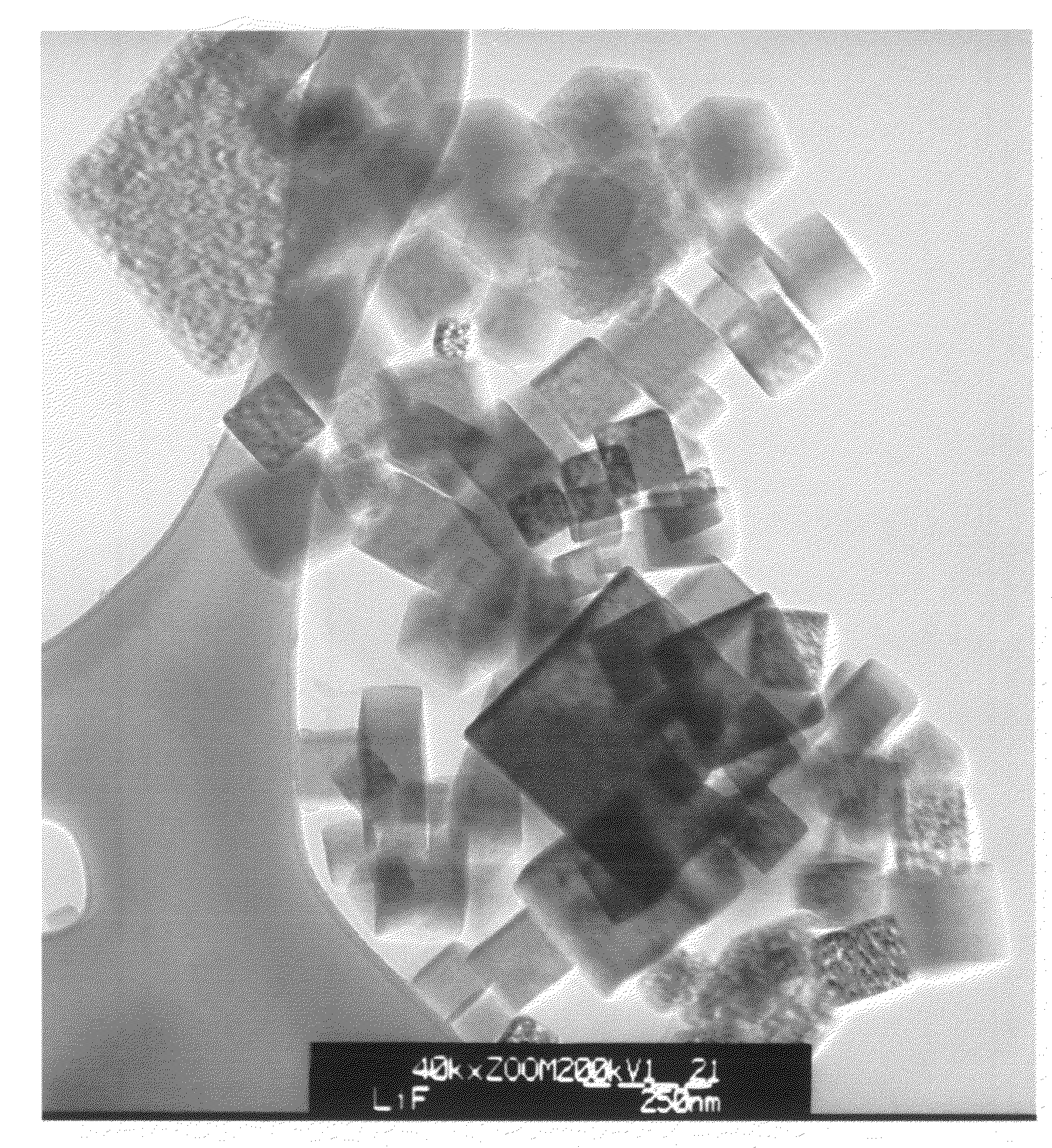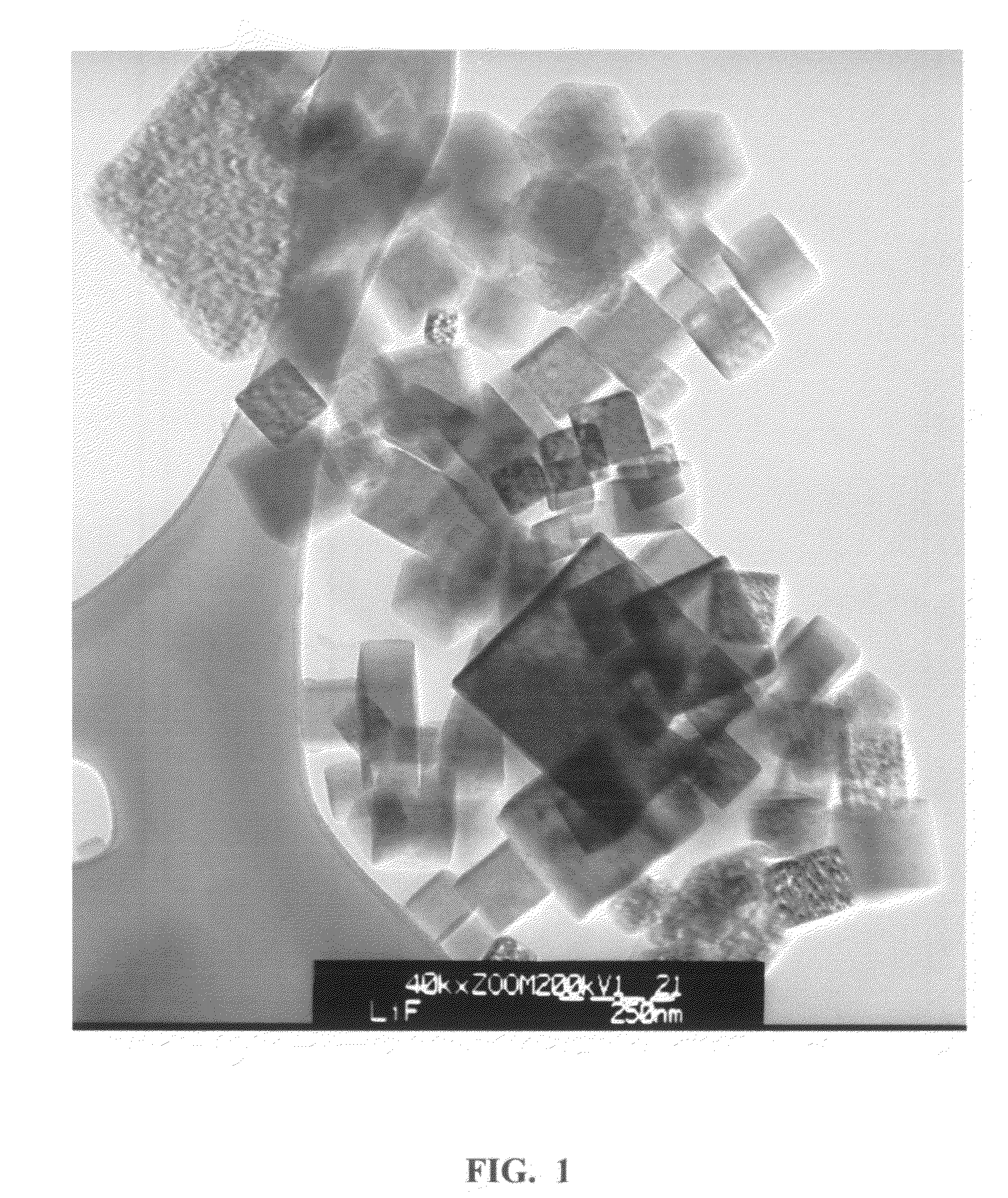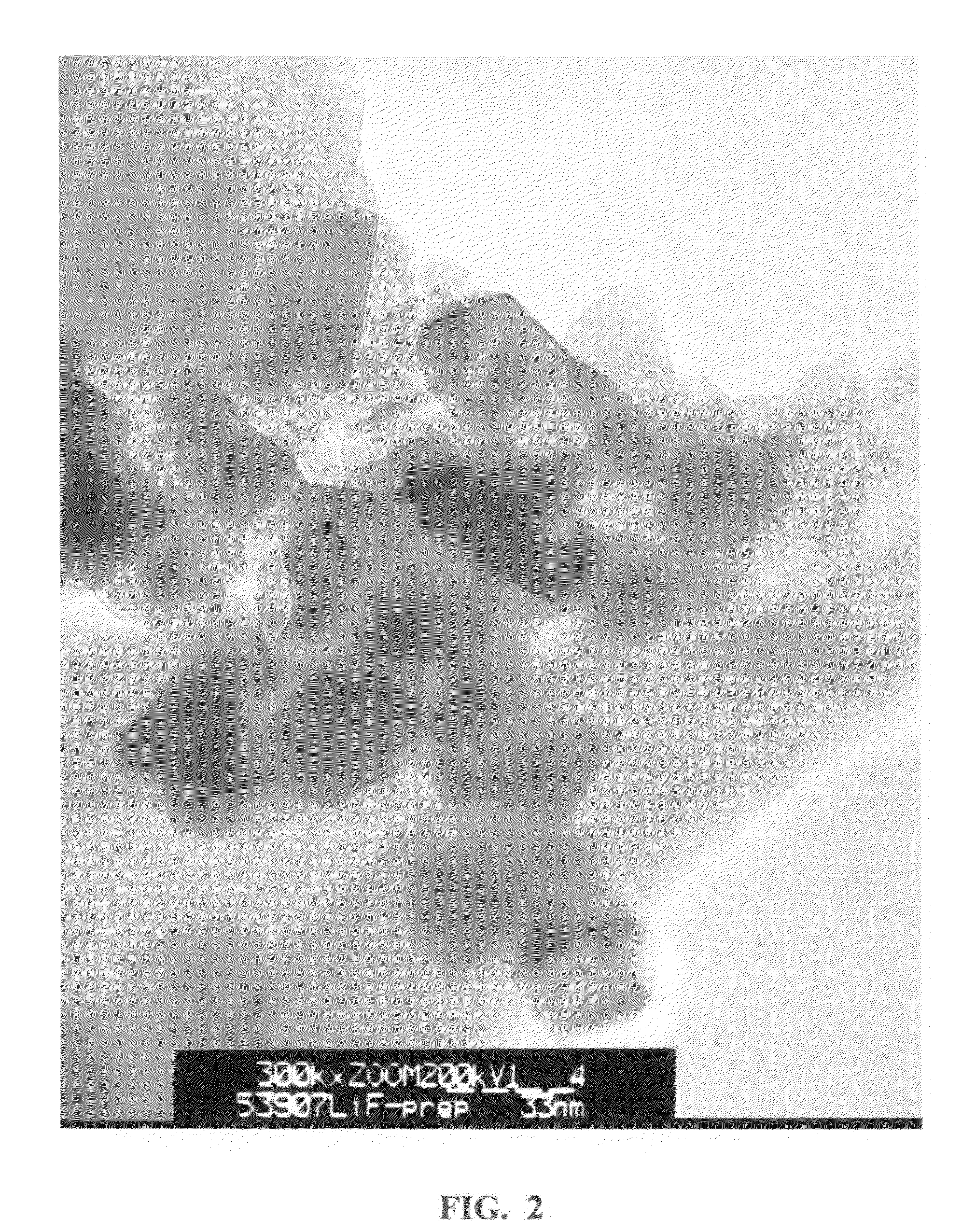Ready-to-sinter spinel nanomixture and method for preparing same
a ready-to-sinter, spinel technology, applied in the field of ceramic products, can solve the problems of high rejection rate, inability to achieve uniformly transparent shape yields, and high rejection rate, and achieve the effect of eliminating any possible contamination problems, increasing the yield of spinel powder, and eliminating high capital equipment and energy costs
- Summary
- Abstract
- Description
- Claims
- Application Information
AI Technical Summary
Benefits of technology
Problems solved by technology
Method used
Image
Examples
example 1
[0033]This example shows the preparation of a ready-to-sinter spinel-LiF nanomixture having a 0.6 wt. % LiF concentration in accordance with the present invention, and the sintering thereof to form a transparent spinel disk.
[0034]Ten grams of spinel nanopowder provided by Ceralox-Sasol North America, Tucson, Ariz., was slurried and ultrasonically dispersed into 70 cc of LiF solution containing 1.5 g / l LiF in distilled water. Then they were mixed with 70 cc of ethanol (200 proof ethanol), which induced precipitation of LiF nanoparticles. The precipitation was allowed to proceed for 60 minutes. After solid liquid separation by centrifugation, the solid residue was dried at 100° C. in a Pyrex tray and deagglomerated. The resulting product was 10 grams of a ready-to-sinter spinel-LiF nanopowder having 0.6 weight % LiF concentration consisting of a nanomixture of spinel and LiF nanoparticles. No surface coating of LiF species onto the spinel particles was observed after TEM characterizat...
example 2
[0036]This example shows the preparation of a ready-to-sinter spinel-LiF nanomixture having a 0.625 wt % LiF concentration in accordance with the present invention, on a somewhat larger scale than in Example 1.
[0037]In a 10 gallon plastic pail, 9.375 liters of 23° C. LiF solution (1.5 g / l LiF in distilled water) were added to 1.325 kg of spinel powder. After ultrasonic dispersion for 60 minutes, 9.375 liters of ethanol were added. The nanosize LiF precipitation was carried out for 60 minutes, at 23° C. temperature. After solid liquid separation by centrifugation, the solid residue was dried at 100° C. in a Pyrex tray and deagglomerated. 1.325 kg of 0.625 wt % LiF of nanomixed spinel powder was produced.
[0038]The powder as prepared above was sintered by hot pressing followed by hot isostatic pressing as described in Example 1, with similar results.
example 3
[0039]This example illustrates that for a fixed alcohol to aqueous solution volume ratio, e.g., 1:1, and a fixed LiF concentration in the aqueous solution, e.g., 1 g / l, the amount of dissolved LiF which will precipitate out of solution in accordance with the method of the present invention, can be varied for a given amount of spinel nanoparticles simply by changing the total amount of LiF aqueous solution employed in forming the spinel dispersion.
[0040]In this example, to prepare three different spinel samples with three different concentrations of LiF, three 10 g samples of spinel nanopowder were mixed with three different volumes of LiF solution containing 1 g / l LiF in distilled water, i.e., 84 cc, 100 cc and 104 cc, respectively. Then a volume of alcohol equal to the volume of LiF solution was added to each sample. The nanosize LiF was allowed to precipitate for 30 minutes. ICP analyses of the residual spinel powder for LiF concentration (LiF concentration back-calculated from Li...
PUM
| Property | Measurement | Unit |
|---|---|---|
| temperature | aaaaa | aaaaa |
| concentration | aaaaa | aaaaa |
| concentration | aaaaa | aaaaa |
Abstract
Description
Claims
Application Information
 Login to View More
Login to View More - R&D
- Intellectual Property
- Life Sciences
- Materials
- Tech Scout
- Unparalleled Data Quality
- Higher Quality Content
- 60% Fewer Hallucinations
Browse by: Latest US Patents, China's latest patents, Technical Efficacy Thesaurus, Application Domain, Technology Topic, Popular Technical Reports.
© 2025 PatSnap. All rights reserved.Legal|Privacy policy|Modern Slavery Act Transparency Statement|Sitemap|About US| Contact US: help@patsnap.com



